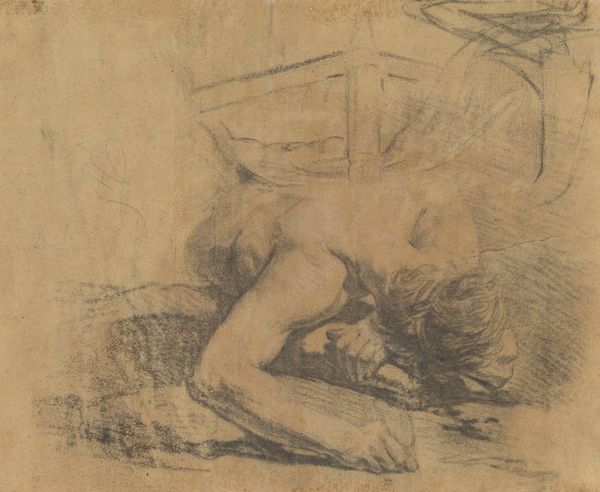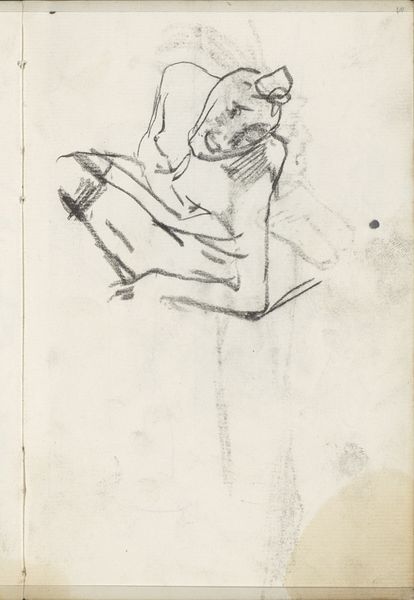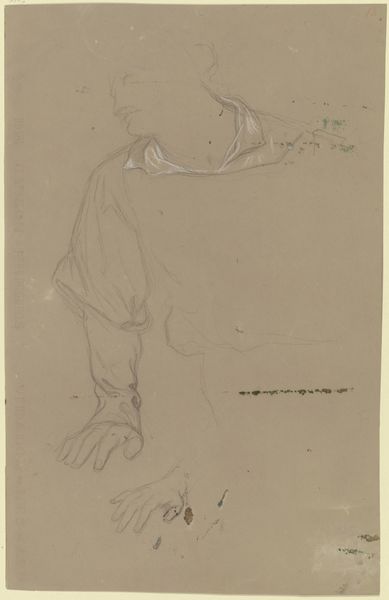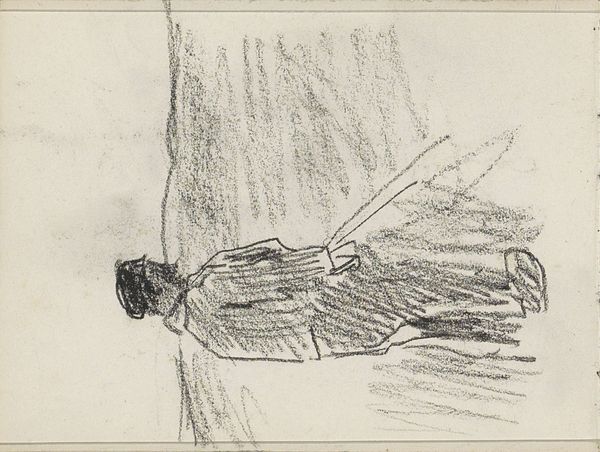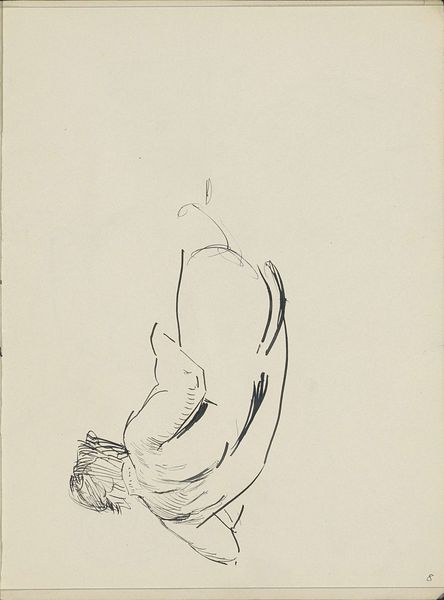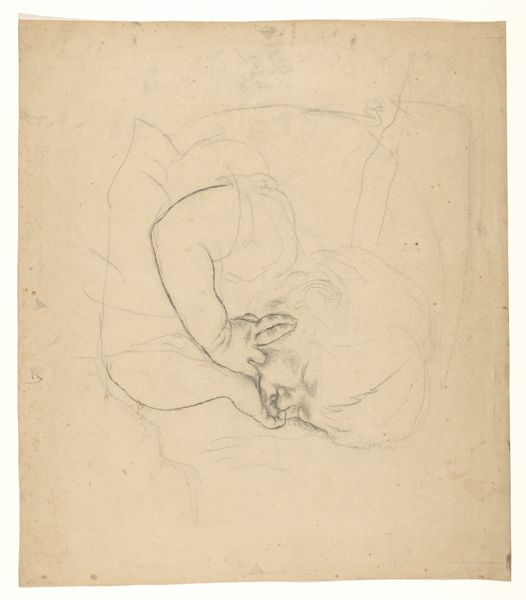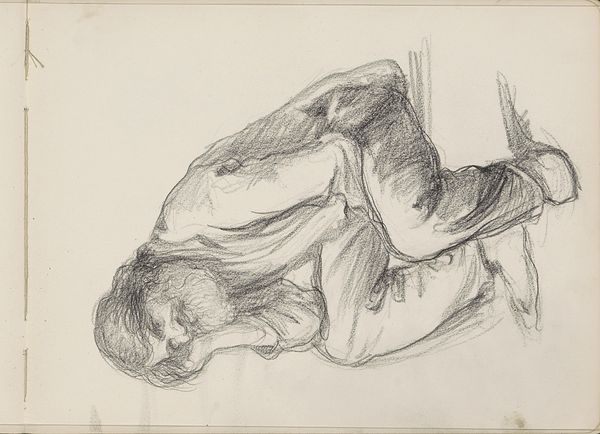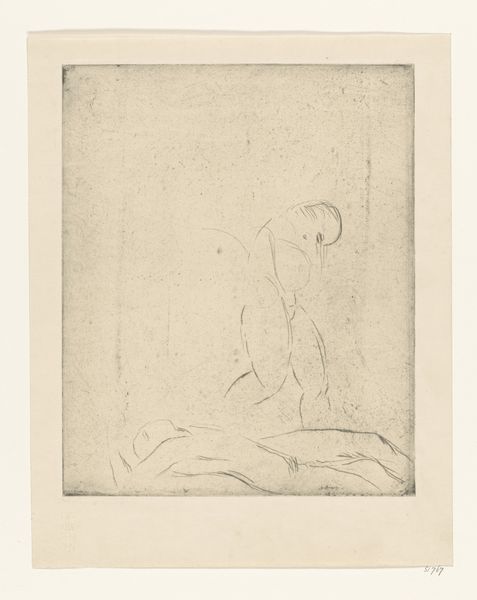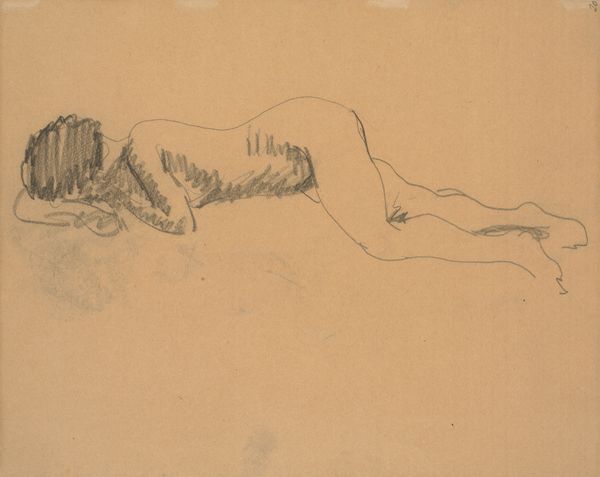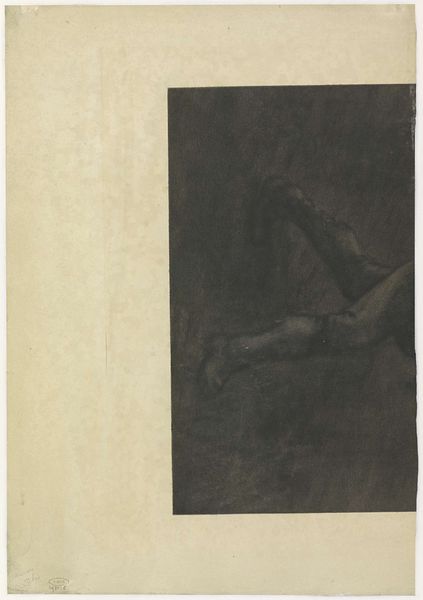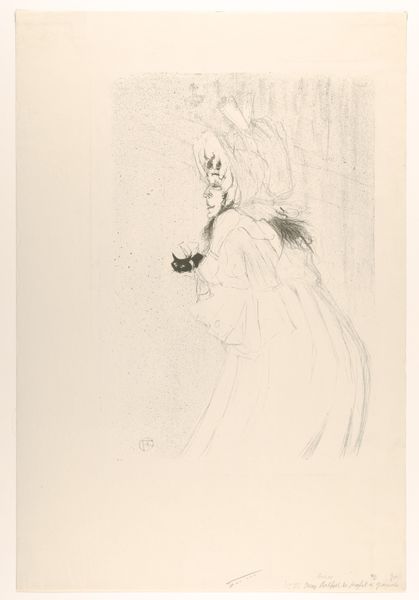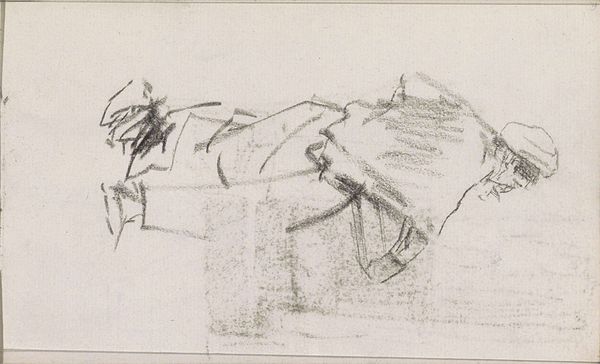
drawing, print, pencil
#
portrait
#
pencil drawn
#
drawing
# print
#
impressionism
#
pencil sketch
#
charcoal drawing
#
figuration
#
pencil drawing
#
pencil
#
watercolor
Dimensions: 230 mm (height) x 165 mm (width) (bladmaal), 195 mm (height) x 147 mm (width) (plademaal)
Curator: Edgar Degas created this drawing, "Siddende danserinde, som snører sine sko," or "Seated Dancer Tying Her Shoe," sometime between 1878 and 1880. Editor: It feels… incomplete. A whisper of a drawing. I can almost smell the chalk dust and the rosin from ballet shoes just by looking at it, you know? A sort of ghost caught mid-tie. Curator: Yes, and what strikes me immediately is how Degas uses this intimate moment to address broader themes of labor, gender, and class. We are seeing a dancer, yes, but we are also seeing the physicality and even vulnerability behind the polished performance. Editor: Vulnerability is a great word for it. There's something beautifully unglamorous here. This isn't the ethereal ballerina; it’s someone struggling to get her shoe fastened! I feel like she's gonna let out a sigh after this small fight with laces, it gives a strange domestic sensation. Curator: Exactly. The work challenges the romanticized image of ballerinas that was commonly consumed by the bourgeois male gaze, offering a glimpse into the arduous realities faced by these young working women in 19th-century Paris. These girls and young women, who are from working-class families, often sacrificed a lot to even perform, the artist hints to a greater, broader aspect of sacrifice and social injustice. Editor: See, I didn't immediately jump to socio-economic critiques—my first thought was about the pure *line* of her back. The way he’s captured the bend in her spine! Though, now you've mentioned it, she has something like that "alone in her thoughts" mood we see often in many figures through XIX century—she's just human. Curator: Degas consistently disrupted traditional artistic conventions. Rather than idealizing his subject, he depicts her in a fleeting, informal pose. Also, the very sketchy quality further reinforces this sense of immediacy. Editor: Like we caught her off guard. I adore it when artists reveal this candid humanness. She seems to be saying “Just give me a minute, okay?” A lovely moment suspended in time. Curator: A necessary reminder, even today, of the narratives often obscured by the dominant, frequently commercial, art world representations of women and labour. Editor: Indeed. Now I'm seeing a bit of my own struggles reflected. Even artists need a shoe-tying break.
Comments
No comments
Be the first to comment and join the conversation on the ultimate creative platform.
